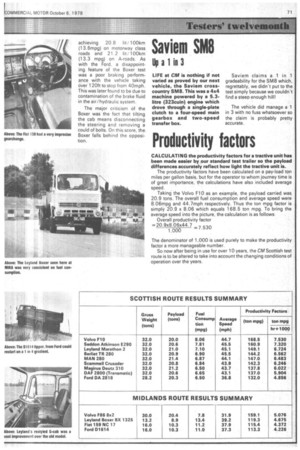Productivity factors
Page 75

If you've noticed an error in this article please click here to report it so we can fix it.
CALCULATING the productivity factors for a tractive unit has been made easier by our standard test trailer so the payload differences accurately reflect how light the tractive unit is.
The productivity factors have been calculated on a pay-load ton miles per gallon basis, but for the operator to whom journey time is of great importance, the calculations have also included average speed.
Taking the Volvo F10 as an example, the payload carried was. 20.9 tons. The overall fuel consumption and average speed were 8.06nnpg and 44.7mph respectively. Thus the ton mpg factor is simply 20.9 x 8.06 which equals 168.5 ton mpg. To bring the average speed into the picture, the calculation is as follows.
Overall productivity factor The denominator of 1,000 is used purely to make the productivity factor a more manageable number.
So now after being in use for over 10 years, the CM Scottish test route is to be altered to take into account the changing conditions of operation over the years.


























































































































































